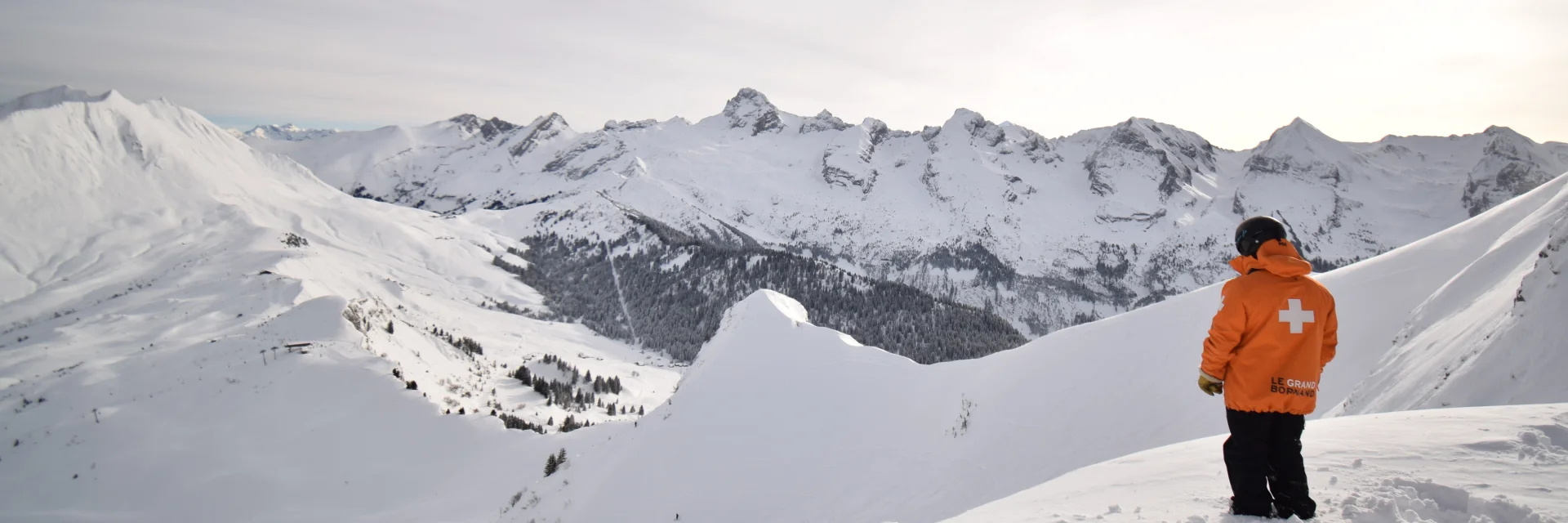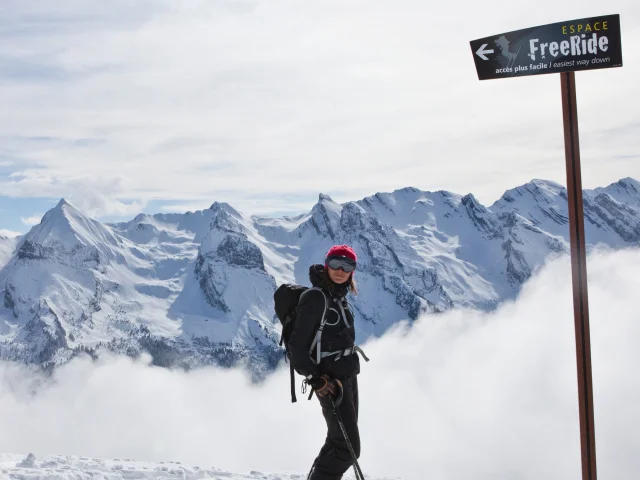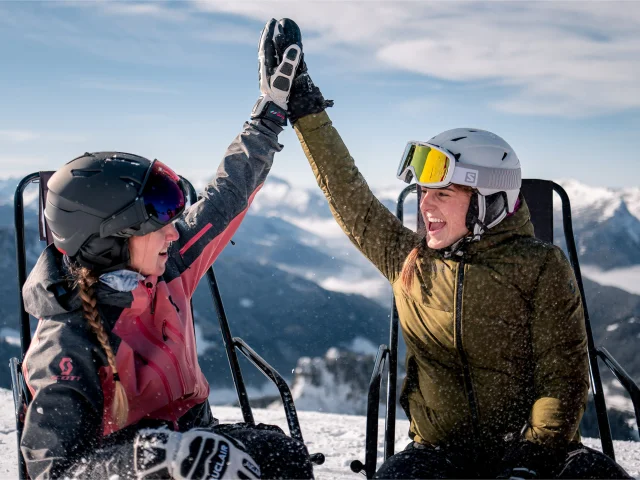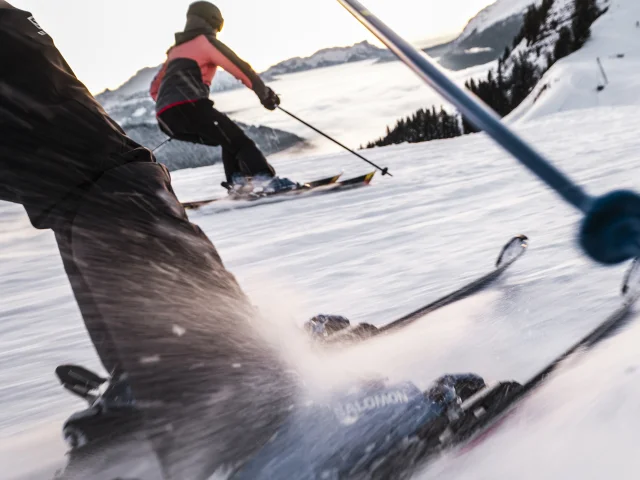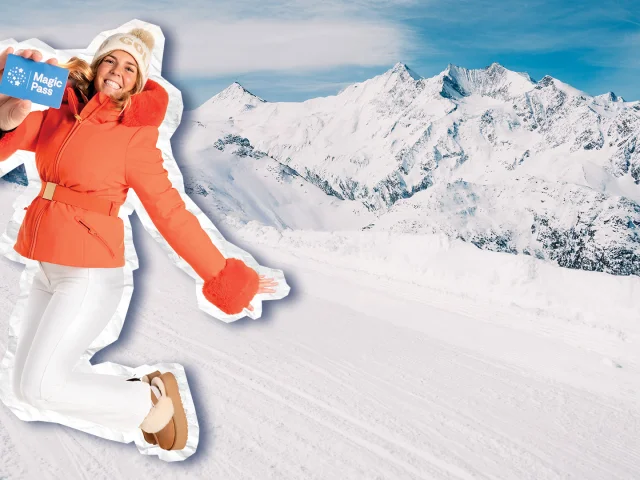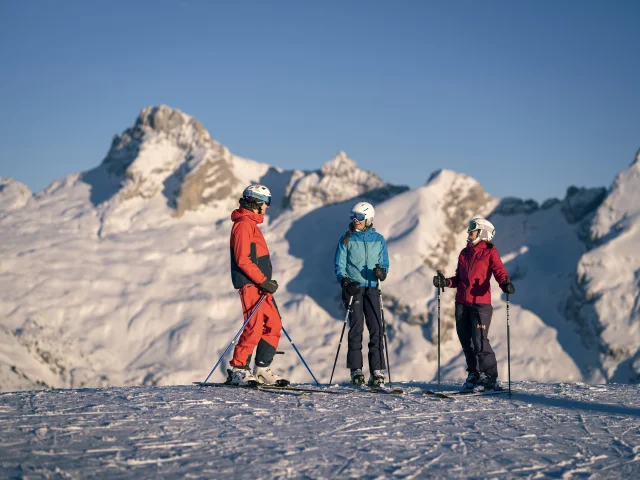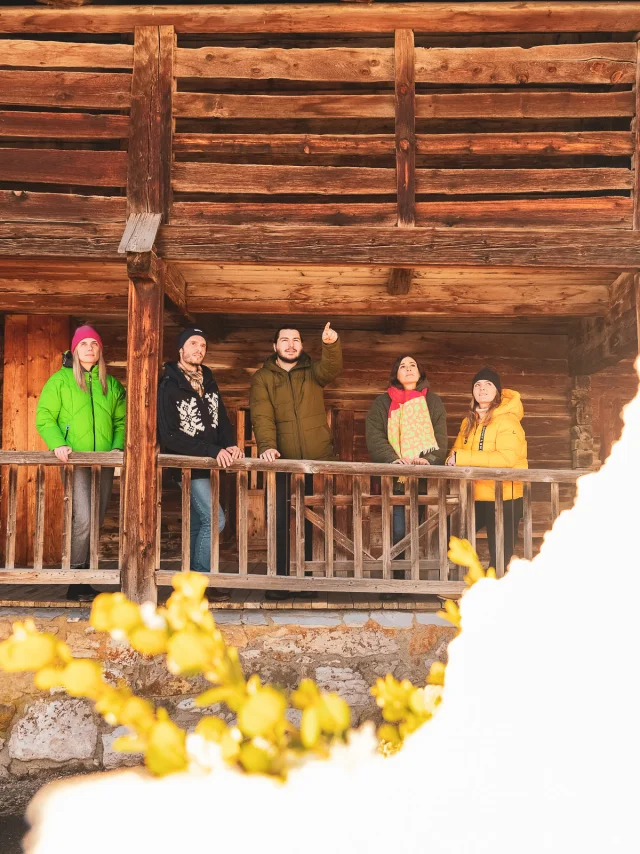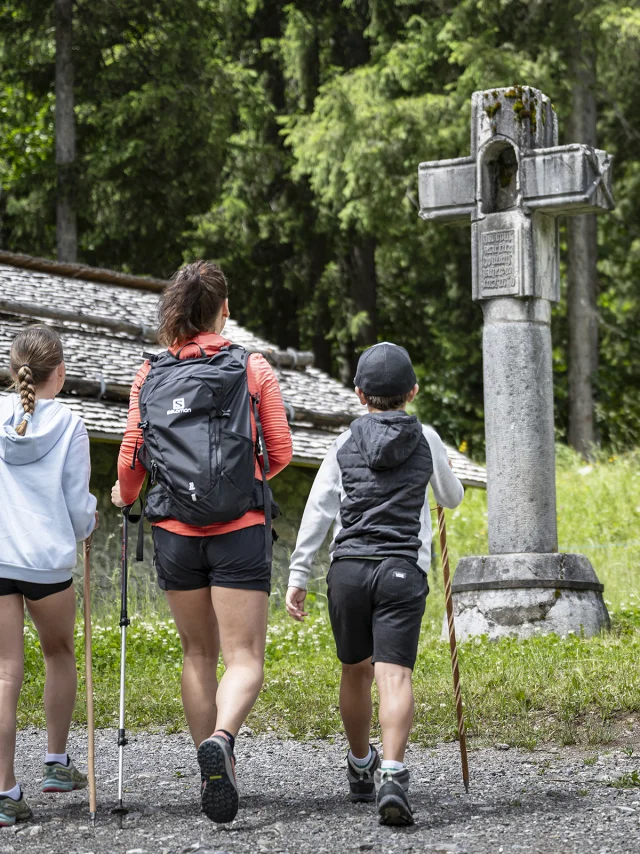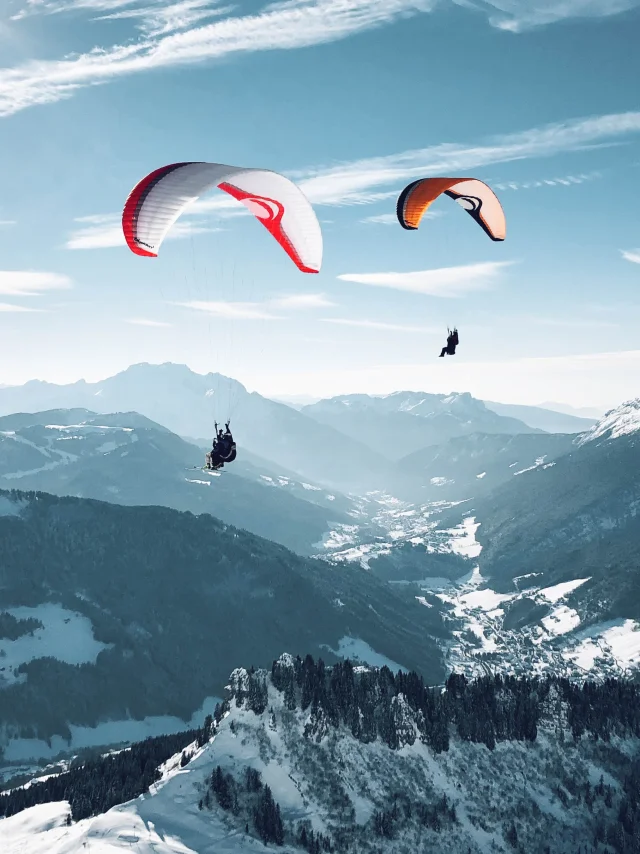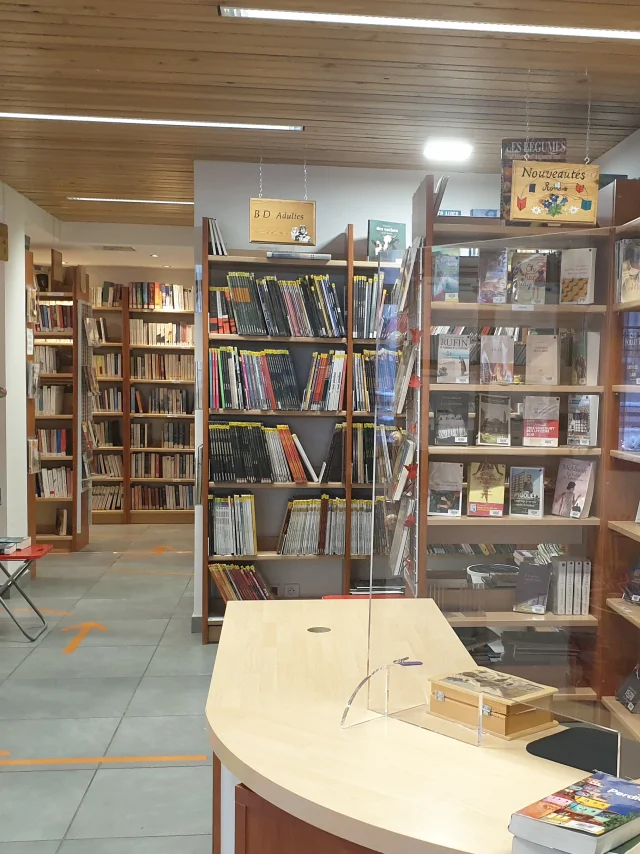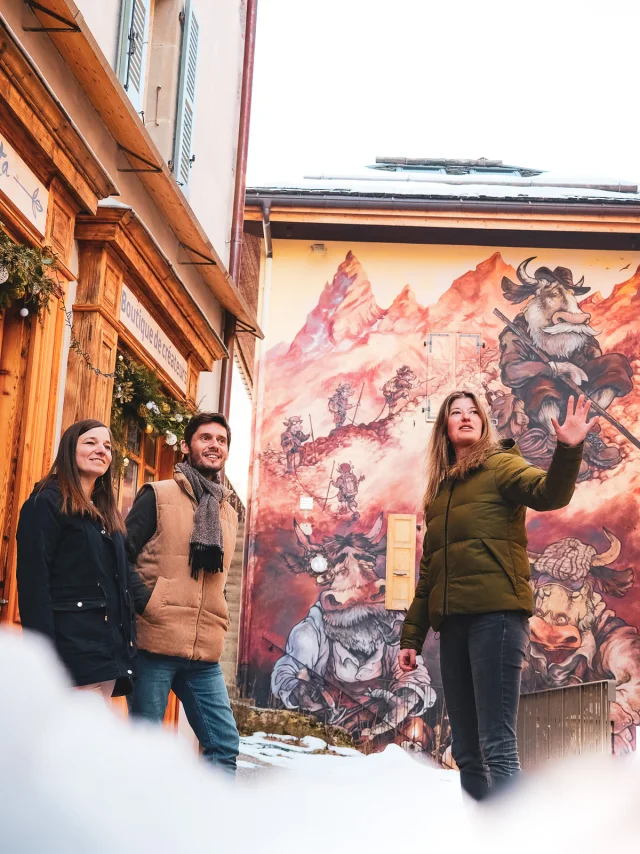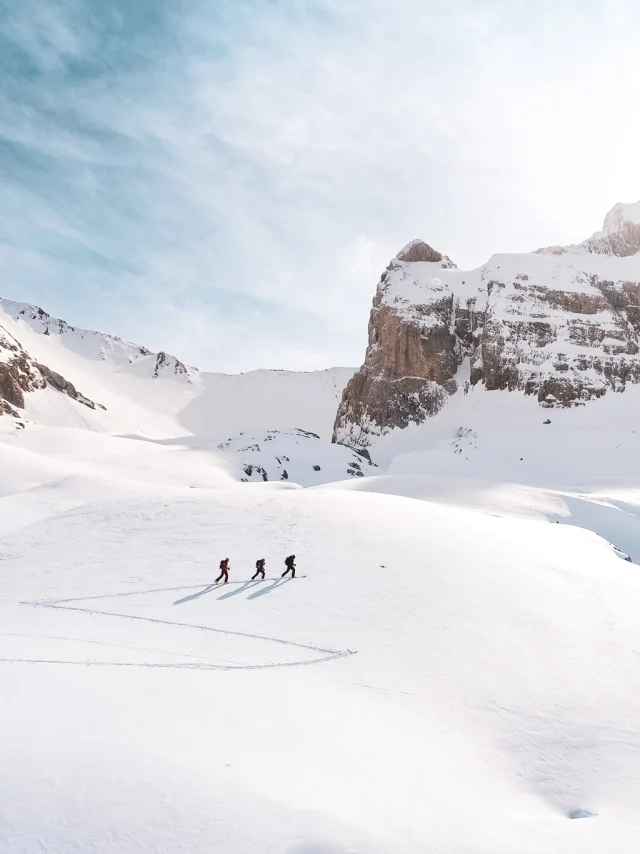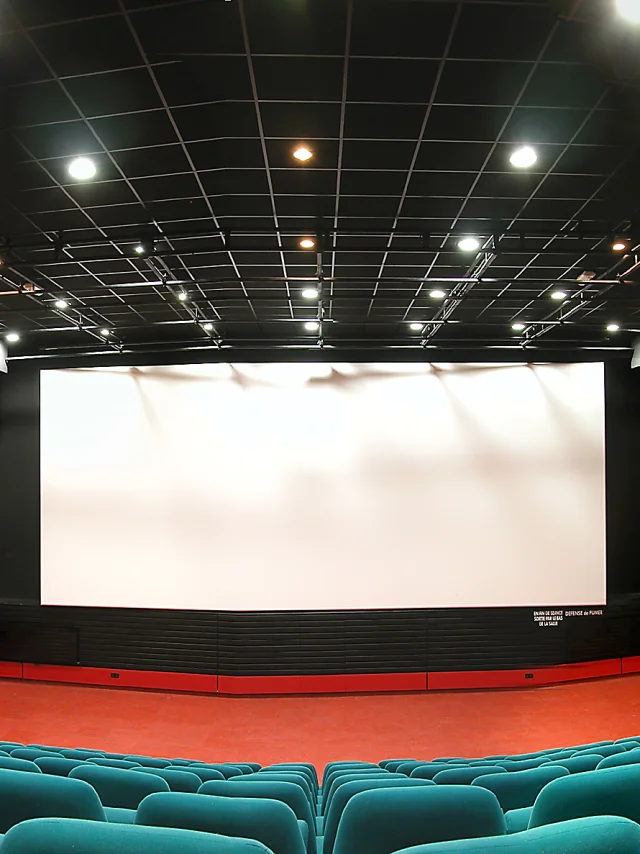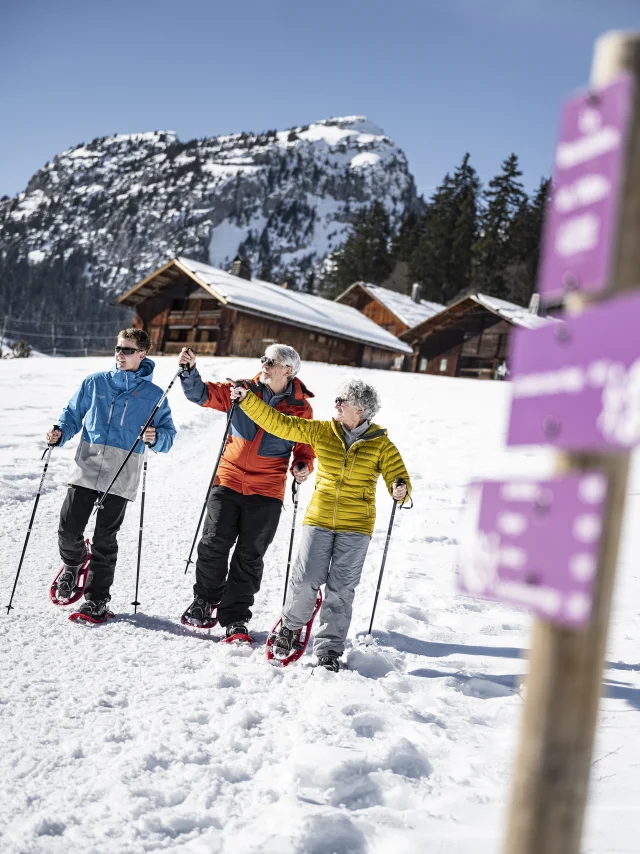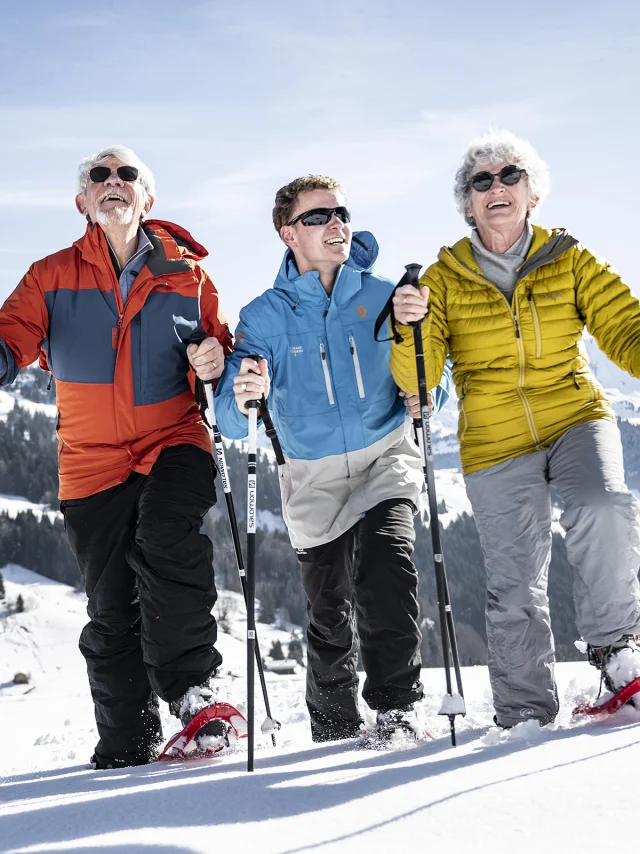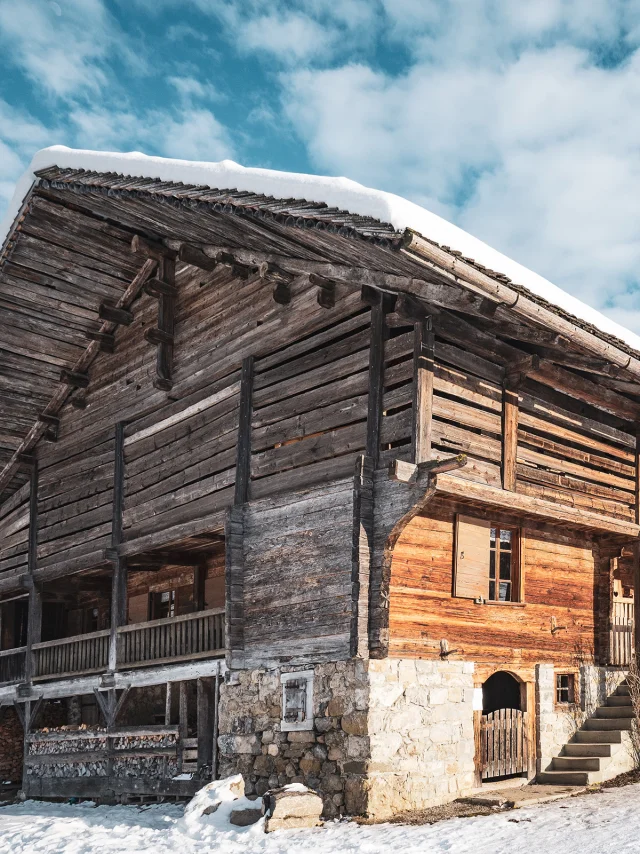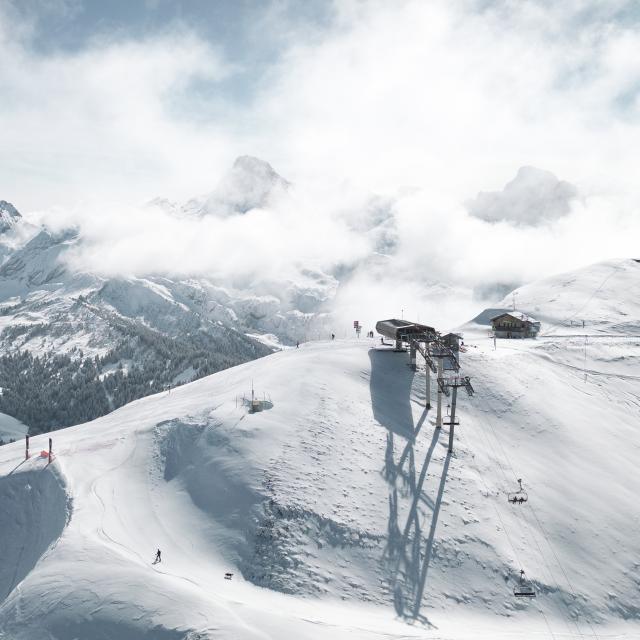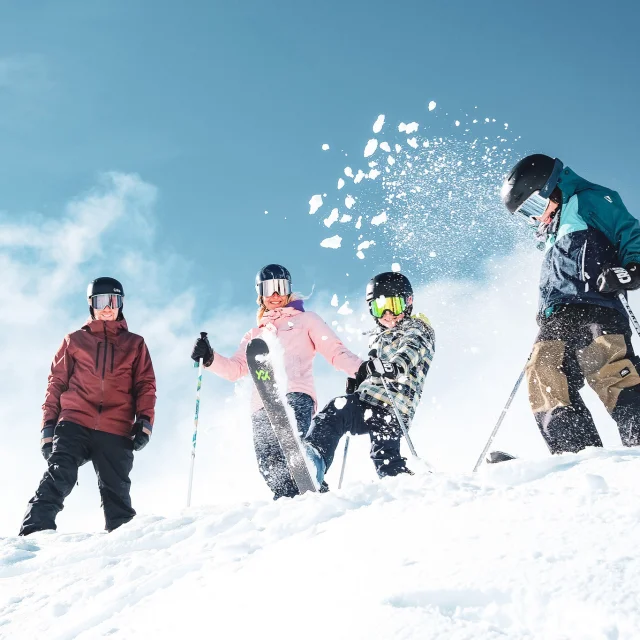Prepared: the effort, the cold, the altitude, the sun… Remember to warm up, pace yourself, eat and hydrate properly.
Equipped: to ski well, you first need to choose equipment suited to your technical level, height and weight. Binding adjustment and maintenance are then essential to limit the risks in the event of a fall or impact.
Ask for advice in specialist shops, and be aware that those that comply with the NF X50-007 rental standard guarantee that your equipment is suitable and that your bindings are properly adjusted.
Protected: sunglasses or a ski mask to avoid being bothered by the sun’s reflection on the snow and to protect your eyes.
To protect yourself from ultraviolet rays, wear sunglasses (SPF 4) and sun cream.
Covered: ski gloves to keep your extremities warm and protect you in the event of a fall.
Protected: a helmet that fits securely on your head!
According to a 2010 study, helmets reduce the risk of head injury by 35%, and even by 61% in children. Its effectiveness has been proven. Ask for a helmet that complies with standard NF EN 1077.
Insured: before taking the plunge, check that you are properly insured. If not, take the necessary steps. Help isn’t free… Follow the safety rules.
04.50.27.02.62 → Resort slope rescue.
04.50.27.57.51 → Services and information on the resort’s slopes.
